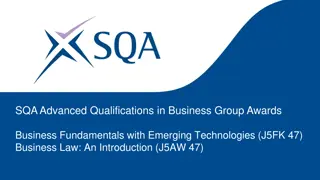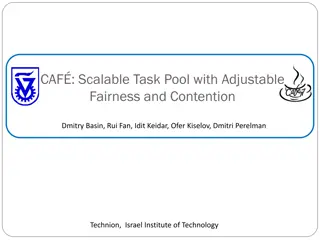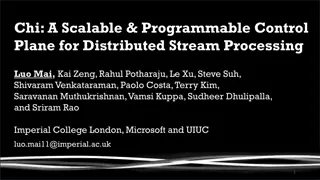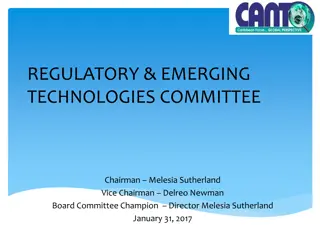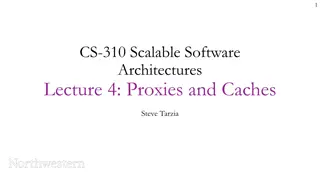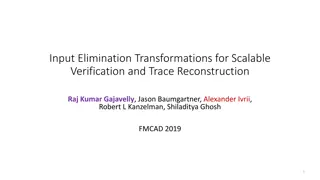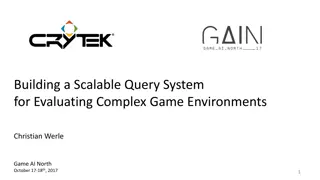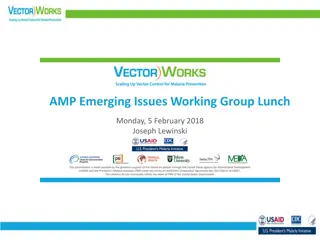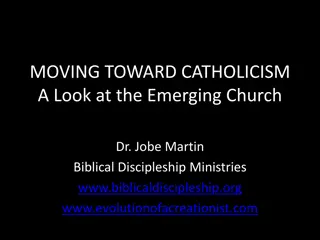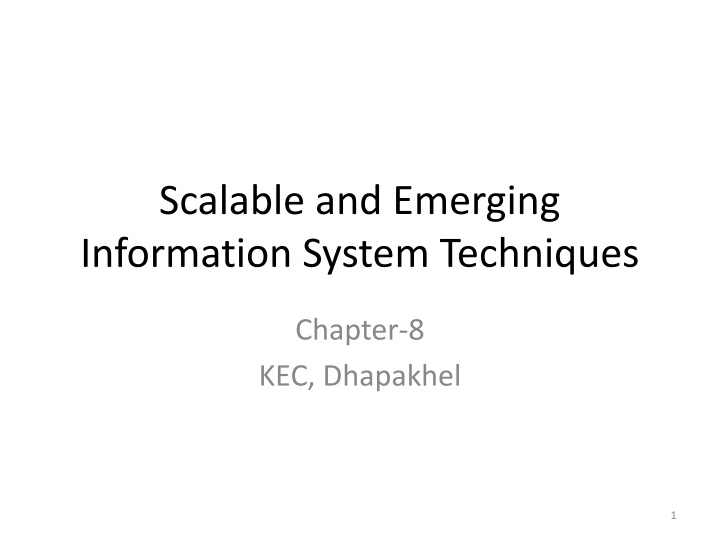
Cloud Computing Layers and Types: A Comprehensive Overview
Explore the world of cloud computing, from scalable information systems to big data applications, techniques for handling voluminous data, and the various layers and types of cloud computing services like SaaS, PaaS, and IaaS. Discover how cloud computing revolutionizes IT services, enables efficient data management, and offers scalability and cost-effectiveness. Dive into the technological advancements shaping modern businesses and innovation strategies.
Download Presentation

Please find below an Image/Link to download the presentation.
The content on the website is provided AS IS for your information and personal use only. It may not be sold, licensed, or shared on other websites without obtaining consent from the author. If you encounter any issues during the download, it is possible that the publisher has removed the file from their server.
You are allowed to download the files provided on this website for personal or commercial use, subject to the condition that they are used lawfully. All files are the property of their respective owners.
The content on the website is provided AS IS for your information and personal use only. It may not be sold, licensed, or shared on other websites without obtaining consent from the author.
E N D
Presentation Transcript
Scalable and Emerging Information System Techniques Chapter-8 KEC, Dhapakhel 1
Big Data Big Data applies to information that can t be processed or analyzed using traditional processes or tools. 2
Techniques for Voluminous Data Cloud Computing is an efficient method to balance between dealing with voluminous data and keeping costs competitive, is designed to deliver IT services consumable on demand, is scalable as per user need and uses a pay-per-use model. Business houses are progressively turn towards retaining core competencies, and shedding the non-core competencies technology, business innovation and savings. for on-demand 3
Cloud Computing Cloud computing consists of hardware and software resources made available on the internet as managed third-party services. These services typically provide access to advanced software applications and high-end networks of server computers. Cloud computing is computing, a type of computing where unused processing cycles of all computers in a network are connect to solve problems too intensive for any stand-alone machine. comparable to grid 4
Types of Cloud Computing SaaS (Software as a Service): This is the idea of providing a given application to multiple tenants, typically using the browser which supports business applications of host and delivery type as a service. End Customers for Myspace.com Common features of SaaS: a) User applications run on cloud infrastructure b) Accessible by users through web browser c) Suitable for CRM (Customer Resource Management) applications d) Supports multi-tenant environment instance Google Doc, 6
Types of Cloud Computing PaaS (Platform as a Service): This is a variant of SaaS. You run your own applications but you do it on the cloud provider s infrastructure. Provides a comprehensive stack for developers to create Cloud-ready business applications. Developers for instance Force.com, Google App Engine, Azure and Salesforce.com etc Features of PaaS are: a) Supports web-service standards b) Dynamically scalable as per demand c) Supports multi-tenant environment 7
Types of Cloud Computing IaaS (Infrastructure as a Service): These are virtual storage and server options that organizations can access on demand, even allowing the creation of a virtual data center. Delivers computing hardware like Servers, Network, Storage, etc. For instance Rackspace.com, GoGrid.com etc. Typical features are: a)Users use resources but have no control of underlying cloud infrastructure b)Users pay for what they use c)Flexible scalable extensive pre-planning infrastructure without 8
Benefit of Cloud Computing Reduced Cost : Cloud technology is paid incrementally, saving organizations money. Increased Storage: Organizations can store more data than on private computer systems. Highly Automated: No longer do IT personnel need to worry about keeping software up to date. Flexibility: Cloud computing offers much more flexibility than past computing methods. More Mobility: Employees can access information wherever they are, rather than having to remain at their desks. Allows IT to Shift Focus: No longer having to worry about constant server updates and other computing issues, government organizations will be free to concentrate on innovation. 9
MapReduce MapReduce is a software framework that allows developers to write programs that process massive amounts of unstructured data in parallel across a distributed cluster of processors or stand-alone computers. It was developed at Google for indexing Web pages and replaced their original indexing algorithms and heuristics in 2004. 10
MapReduce and Hadoop Systems MapReduce is the heart of Hadoop. MapReduce allows data to be distributed across a large cluster, and can distribute out tasks across the data set to work on pieces of it independently, and in parallel. This allows big data to be processed in relatively little time. Apache has produced an open source MapReduce platform called Hadoop. 11
Framework is divided into two parts Map, a function that parcels out work to different nodes in the distributed cluster. Reduce, another function that collates the work and resolves the results into a single value. The MapReduce framework tolerant because each node in the cluster is expected to report back periodically with completed work and status updates. If a node remains silent for longer than the expected interval, a master node makes note and re- assigns the work to other nodes. is fault- 12
MapReduce Interaction Map functions create a user-defined index from source data Reduce functions compute grouped aggregates based on index Flexible framework users can cast raw original data in any model that they need wide range of tasks can be expressed in this simple framework 13
Hadoop System Developed by Apache as an open source distributed MapReduce platform, based off of Google's MapReduce. Runs on a Java architecture framework that supports the processing of large data sets in a distributed computing environment. Hadoop allows businesses to process large amounts of data quickly by distributing the work across several nodes. Good for Big data sets and on large cluster. 14
Hadoop - A Key Business Tool Hadoop System is used by Large Content-Distribution Companies, such as... Yahoo Hadoop is used for many of their tasks, and over 25,000 computers are running Hadoop. Amazon Hadoop is good for Amazon, they have lots of product data, as well as user-generated content to index, and make searchable. New York Times Hadoop is used to perform large-scale image conversions of public domain articles. 15
Hadoop - A Key Business Tool Used by Non-Content-Distribution Companies, such as Facebook eHarmony Other early adopters include anyone with big data: medical records tax records network traffic large quantities of data Wherever there is a lot of data, a Hadoop cluster can generally process it relatively quickly. 16
Data Management in the Cloud Data management applications are potential candidates for deployment in the cloud Industry: enterprise database system have significant up- front cost that includes both hardware and software costs Academia: manage, process and share mass-produced data in the cloud Many Cloud Killer Apps are in fact data-intensive Batch Processing as with MapReduce Online Transaction Processing (OLTP) as in automated business applications Offline Analytical Processing (OLAP) as in data mining or machine learning 17
Data Management in the cloud A database system must implement for it to run well in the cloud, in potential database applications to consider for cloud deployment. Data management applications are best suited for deployment on top infrastructure. Data management is the proper management of a data resource for management consists of a set of theories, concepts, principles, and techniques for properly managing data. The primary objective is to support the business information as needs of the organization. of cloud computing an organization. Data 18
Data Management in Cloud There are three characteristics of a cloud computing environment. Compute power is elastic, but only if workload is parallelizable. Data is stored at untrusted host. Data is replicated, often across large geographic distances 19
Information Retrieval Information retrieval obtaining information resources relevant to an information need from a collection of information resources. Searches can be based on metadata or on full- text indexing. Automated information retrieval systems are used to reduce what has been called informationoverload . is the activity of 20
Information Retrieval in the Cloud IR user seeks actively information, pulling at it, by means of querying or browsing. In tag querying, user enters one or more tags in the search box to obtain an ordered list of resources which were in relation with these tags. When a user is scanning this list, the system also provide a list of related tags (i.e. tags with a high degree of co-occurrence with the original tag), allowing hypertext Browsing. 21
Information Retrieval System Typically it refers to the automatic (rather than manual) retrieval of documents Information Retrieval System (IRS) Information Retrieval is a research-driven theoretical and experimental discipline The focus is on different aspects of the information seeking process, depending on the researcher s background or interest: Computer scientist fast and accurate search engine Librarian organization and indexing of information Cognitive scientist the process in the searcher s mind Philosopher Is this really relevant ? 22
The stages of IR Information Creation Indexing, organizing Indexed and structured information Retrieval Searching Browsing 23
The formalized IR process Real world Anomalous state of knowledge Information need Collection of documents Query Document representations Matching Results 24
Stopwords / Stoplist Function words do not bear useful information for IR of, in, about, with, I, although, Stoplist: contain Stopwords, not to be used as index Prepositions Articles Pronouns Some adverbs and adjectives Some frequent words (e.g. document) The removal of stopwords usually improves IR effectiveness A few standard stoplists are commonly used. 25
Stemming Reason: Different word forms may bear similar meaning (e.g. search, searching): create a standard representation for them Stemming: Removing some endings of word computer compute computes computing computed computation comput 26
Link Analysis in Cloud Setup The web is notjust a collection of documents its hyperlinks are important! A link from page A to page B may indicate: A is related to B, or A is recommending, citing, voting for or endorsing B Links are either referential click here and get back home, or Informational click here to get more detail Links effect the ranking of web pages and thus have commercial value. 27
See More on Chapter 7 for Link Analysis Thank you 28

![READ⚡[PDF]✔ Emerging Space Powers: The New Space Programs of Asia, the Middle Ea](/thumb/21554/read-pdf-emerging-space-powers-the-new-space-programs-of-asia-the-middle-ea.jpg)

